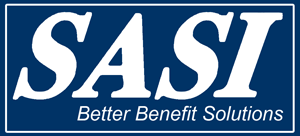Today, many employers offer wellness programs that are designed to encourage healthy lifestyles and habits among their workers. Some larger employers are actively promoting the health and well-being of their employees by engaging them with mobile apps and wearable technology to track physical activity. On May 16, 2016, the Equal Employment Opportunity Commission (EEOC), Issued Final Rules for Wellness Programs that describe specifically how much information can be collected from employees and family members. The Final Rules seek to provide balance between encouraging wellness program participation and providing protection for safeguarding health information. According to the EEOC, the rules seek to ensure “wellness programs actually promote good health and are not just used to collect or sell sensitive medical information about employees and family members or to impermissibly shift health insurance costs to them.”
There are two Federal Statutes that were affected by these rules. The first is Title I of the Americans with Disabilities Act (ADA) and the second is Title II of the Genetic Information Nondiscrimination Act (GINA). The ADA rules cover requests by employers seeking health information from employees and the GINA rules cover employers’ requests seeking health information from family members. Both the ADA and GINA final rules seek to ensure that workplace wellness programs are reasonably designed to promote health and prevent disease. To safeguard employee information they require employers to provide notice to those participating about what information will be collected, how it will be used, and who it will be shared with. Finally, employers may only receive collected information in aggregate form so the identity of the employees remains protected.
The EEOC clarified the acceptable limits employers by offer on incentives for participation in their wellness programs for both employees and spouses. Under the ADA, employers can reward employee participation in wells initiatives up to 30% of the total cost of self-only coverage. The same applies under GINA, the maximum attributable to a spouse’s participation in wellness initiatives also is 30% of the total cost of self-only coverage. The incentive limit applies separately to employees and their spouses, so an employee and spouse could together receive 60% of the cost of self-only coverage if they both participate.
The new rules affirmed that wellness programs would be considered voluntary as long as an employers’ incentives or discounts don’t exceed these limits. Employers can design a wellness plans that require employee to share health information or participate in a medical exam as long as the incentives don’t exceed that threshold.
The EEOC has posted a “Question and Answer” page discussing the new changes. Click here to view it.
The final rules go into effect in 2017, and apply to all workplace wellness programs, including those that aren’t tied to an employer’s health insurance program, the EEOC said.
SASI has years of experience guiding employers through the complicated process of setting up and administering their employee health plans.
Contact SASI Today: Click Here for our convenient web form or call us at (800) 752-3539
